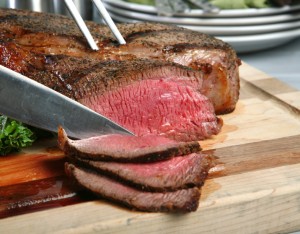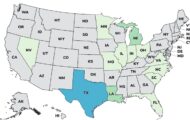What it your steak had some work done? What if it went under the knife or the needle to become more tender? A steak that’s been mechanically tenderized, will still look like a steak and taste like a steak, but it needs to get cooked like a hamburger so it won’t make you sick. The problem is, you have no way of knowing if your steak was mechanically tenderized because that information isn’t required on food labels. But consumer advocates say it’s about time that it is.
 The Safe Food Coalition has been trying since 2009 to get the U.S. Department of Agriculture (USDA) to require labeling of mechanically tenderized beef products, which account for about 18 percent of beef cuts sold nationwide. This week, the group sent a letter to USDA Secretary Tom Vilsack urging him to take action.
The Safe Food Coalition has been trying since 2009 to get the U.S. Department of Agriculture (USDA) to require labeling of mechanically tenderized beef products, which account for about 18 percent of beef cuts sold nationwide. This week, the group sent a letter to USDA Secretary Tom Vilsack urging him to take action.
Mechanical tenderization is what it sounds like it: using a machine outfitted with small blades or needles to repeatedly pierce the surface of tougher meat cuts to make them more tender. That’s it. So what’s the problem?
In a word: pathogens. On cuts of meat such as steaks and roasts, any potentially dangerous bacteria, such as E. coli and Salmonella are on the surface. With ground beef, they are mixed throughout. That’s why medium-rare is considered safe for steak but not for burgers. Cooking a steak to an internal temperature of 145 degrees F (medium rare) gets it hot enough to kill surface bacteria. Burgers need to reach an internal temperature of 160 degrees F (well done) before they can safely come off the grill.
But when a cut of meat is mechanically tenderized, any bacteria that is on its surface gets pushed to the interior and must be cooked to an internal temperature of 160 degrees F to kill the pathogens. “Without labeling to identify these products as mechanically tenderized and non-intact products, and information on how to properly cook these products, consumers may be unknowingly at risk for foodborne illness,” the Safe Food Coalition said in a statement. And the danger isn’t theoretical. In 2009, 248,000 pounds of mechanically tenderized steaks were recalled after they were linked to an E.coli outbreak that sickened 21 people in 16 states.
More than a decade ago, the USDA acknowledged that mechanically tenderizing meat products could push surface pathogens to the interior of meat cuts and that “as a result, customary cooking of these products may not be adequate to kill the pathogens.” But rather than require that those products be labeled, the USDA encouraged the industry to do so. For the most part, that hasn’t happened.
The Safe Food Coalition includes the following groups: Center for Foodborne Illness Research & Prevention, Center for Science in the Public Interest, Consumer Federation of America, Consumers Union, Food & Water Watch, Government Accountability Project, National Consumers League, STOP Foodborne Illness, and US PIRG. Secretary Vilsack has not yet responded to the group’s letter.




